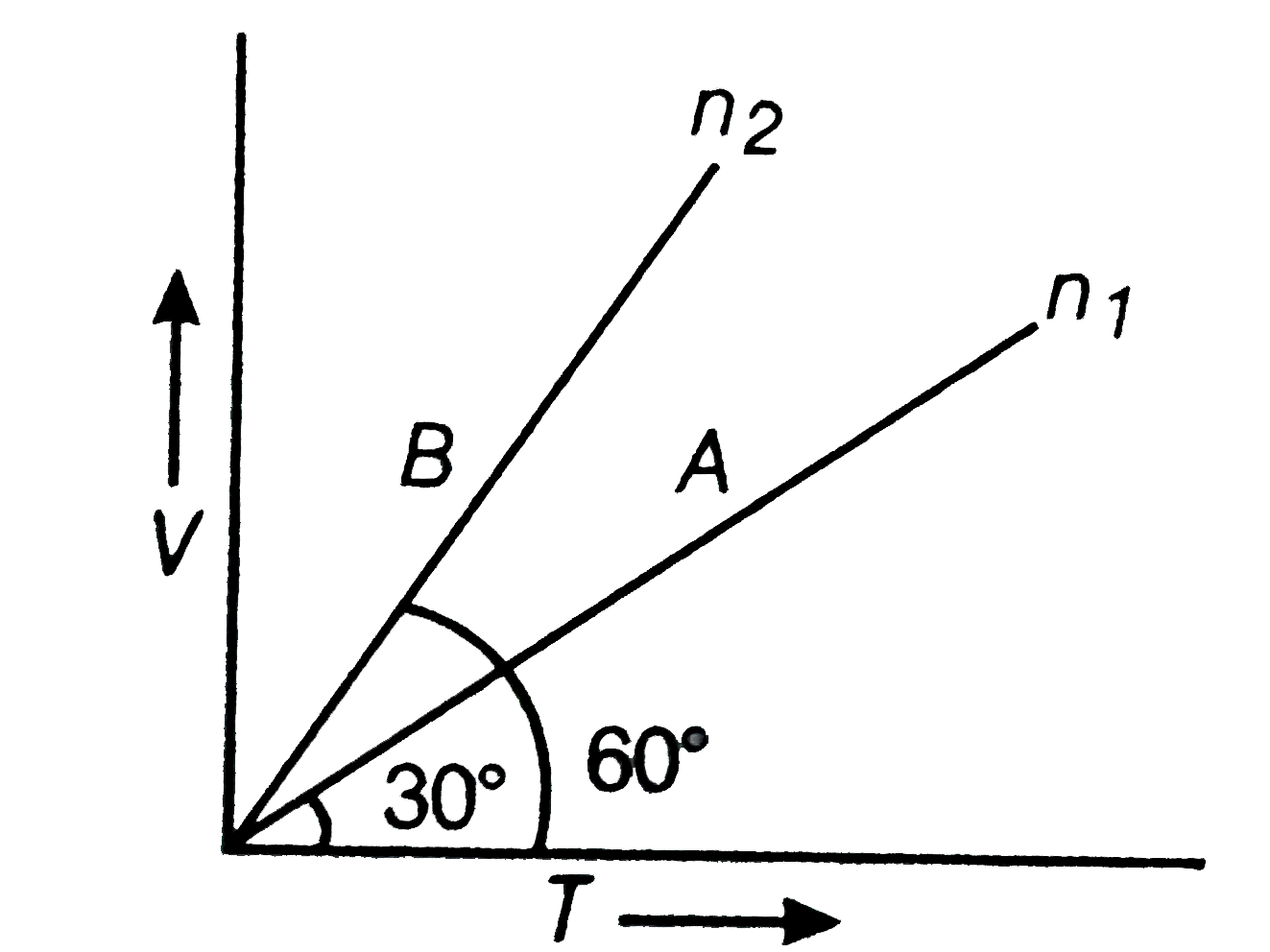Two gases occupy two containers A and B then gas in A, of volume 0.10m3, exerts a pressure of 1.40Mpa and that in B, of volume 0.15m3, exerts a pressure 0.7MPa. The two containers are joined by a tube of negligible volume and the gases are allowed to intermingle. Then if the temperature remains constant, the final pressure in the container will be (in MPa)
0.7
0.98
1.4
2.1
The correct Answer is:B
b. As the quantity of gas remains constant, μA+μB=μ
PAVART+PBVBRT=P(VB+VB)RT
P=PAVA+PBVBVA+VB=1.4×0.1+0.7×0.150.1+0.15
⇒P=0.98MPa
Topper's Solved these Questions
- BOOK - CENGAGE PHYSICSCHAPTER - KINETIC THEORY OF GASES AND FIRST LAW OF THERMODYNAMICSEXERCISE - Multiple Corrects29videos
KINETIC THEORY OF GASES AND FIRST LAW OF THERMODYNAMICS
- BOOK - CENGAGE PHYSICSCHAPTER - KINETIC THEORY OF GASES AND FIRST LAW OF THERMODYNAMICSEXERCISE - Assertion-Reasoning6videos
KINETIC THEORY OF GASES AND FIRST LAW OF THERMODYNAMICS
- BOOK - CENGAGE PHYSICSCHAPTER - KINETIC THEORY OF GASES AND FIRST LAW OF THERMODYNAMICSEXERCISE - Subjective22videos
KINETIC THEORY OF GASES AND FIRST LAW OF THERMODYNAMICS
- BOOK - CENGAGE PHYSICSCHAPTER - KINETIC THEORY OF GASESEXERCISE - Compression2videos
KINETIC THEORY OF GASES
- BOOK - CENGAGE PHYSICSCHAPTER - LINEAR AND ANGULAR SIMPLE HARMONIC MOTIONEXERCISE - Multiple Correct Answer Type9videos
LINEAR AND ANGULAR SIMPLE HARMONIC MOTION
Similar Questions
Two gases occupy two containers (A) and (B). The gas in (A) of volume 0.11m3 experts a pressure of 1.38Mpa. The gas in (B) of volume 0.16m3 experts a pressure of 0.69 Mpa. Two containers are united by a tube of negligible volume and the gases are allowed to intermingle. What is the final pressure in the container if the temperature remains constant ?
View SolutionAt constant temperature certain mass of gas in vessel of volume 0.01m3 exerts a pressure of 'P' atm. If it is transferred to a vessel of volume 10L, then its pressure in atm is?
View Solution
Knowledge Check
- Question 1 - Select One
The temperature of a gas is raised while its volume remains constant, the pressure exerted by the gas on the walls of the container increases because its molecules
Alose more kinetic energy to the wallBare in contact with the wall for a shorter timeCstrike the wall more often with higher velocitiesDcollide with each other with less frequency - Question 2 - Select One
Container A holds an ideal gas at a pressure 1×105 Pa and at 300 K. Container B whose volume is 4 times the volume of A has the same ideal gas at 400 K and at a pressure of 5×105

The valve V is adjusted to allow the pressure to equalize, but the temperature of each container is kept constant at the initial value, then the pressure in the two containers is :A4×105 PaB3×105 PaC2×105 PaD1×105 Pa - Question 3 - Select One
A cylinder contains a gas at temperature of 270C and a pressure 1MPa. If the temperature of the gas is lowered to −230C, the change in pressure is
A1MPaB5/6MPaC1/6MPaD5MPa
A gas occupies 0.6dm3 under a pressure of 0.92 bar. Find under what pressure, the volume of gas will be reduced by 20 precent of its original volume, temperature remaining constant.
View Solution0.5 moles of gas A and x moles of gas B exert a pressure of 200 Pa in a container of volume 10m3 at 1000K. Given R is the gas constant in jk−1 ,x is :
View SolutionTwo gases A and B at same pressure contain number of moles n1andn2. Their volume temperature graphs are shown in figure. Then the ratio
 View Solution
View SolutionAccording to Avogadro, equal volumes of two different gases under same conditions of temperature and pressure contain equal number of
View SolutionContainers A and B have same gases. Pressure, volume and temperature of A are all twice that of B, then the ratio of number of molecules of A and B are
View Solution

